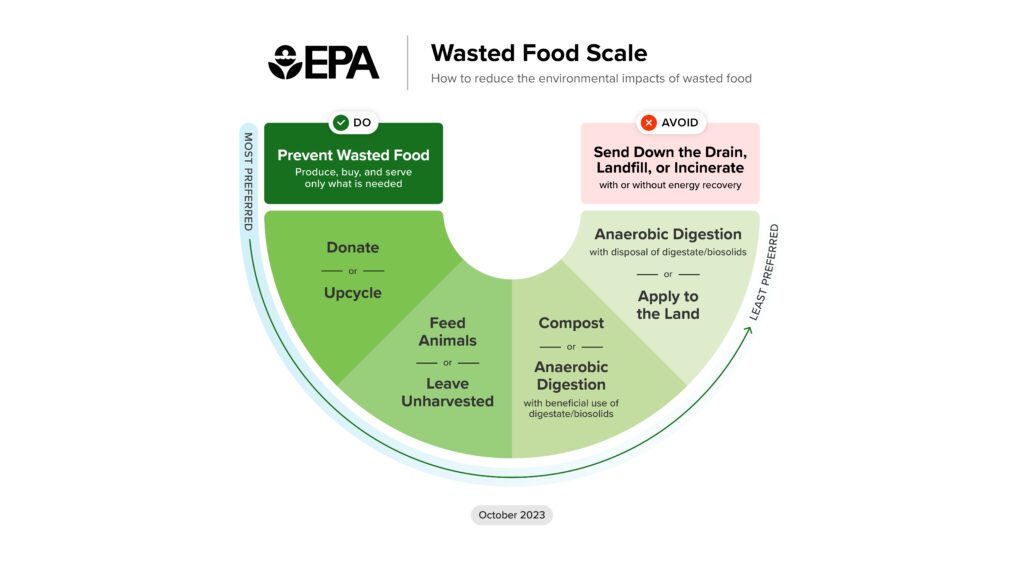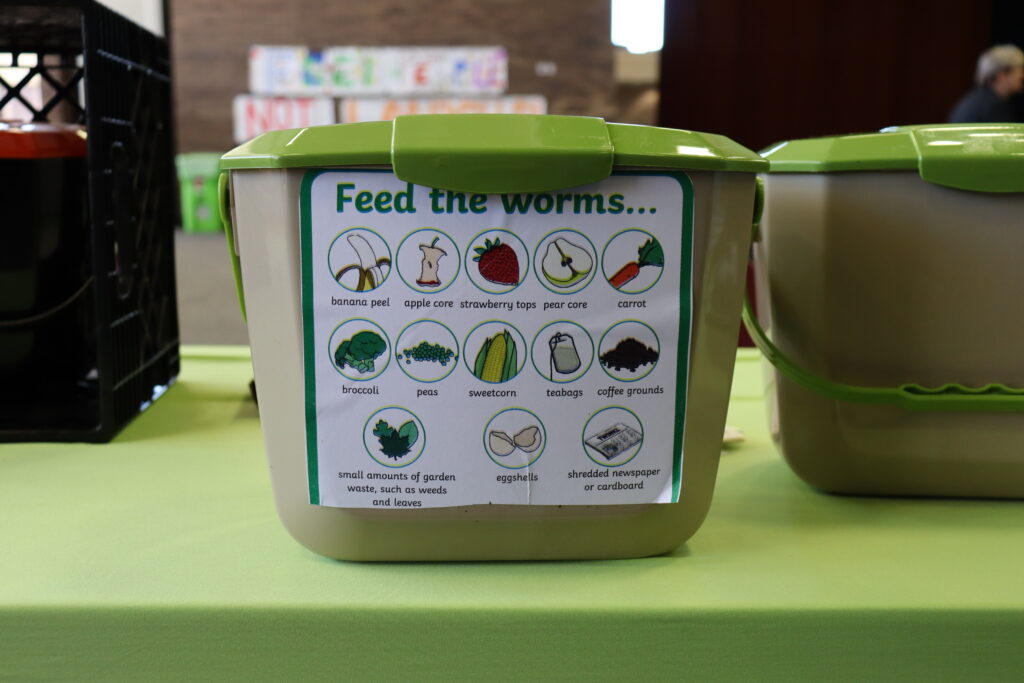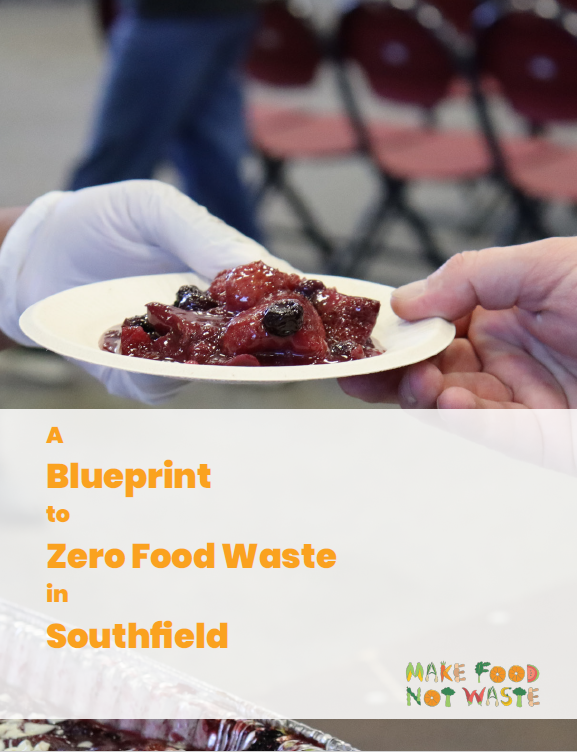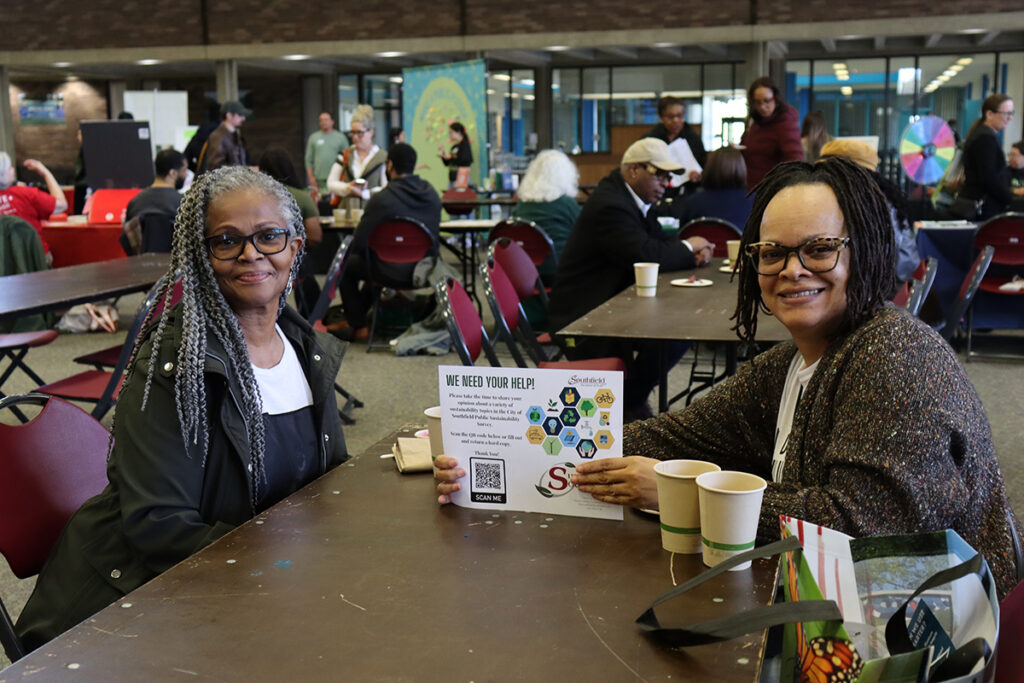
Food waste is a leading driver of climate change, a large contributor to limited landfill space, a lever in helping those facing food insecurity, and a key solution to mitigating flooding and erosion and being able to grow healthy and nutritious food. Why wouldn’t we work to address this?
Food Waste 101
Food waste is food that is not ultimately consumed by humans and is sent to a landfill, such as plate waste, spoiled food, or peels and rinds that are considered inedible. It is estimated that 38% of our food supply goes to waste, most of it at the household level. The average person wastes approximately one pound of food each day, filling our landfills with more than 2 billion pounds of food each year in Michigan alone. While food makes up 25% of landfill space, it creates 58% of landfill emissions as food decomposes releasing methane, a greenhouse gas that has a global warming potential (the amount of energy the emission of one ton of gas will absorb over a given time relative to carbon dioxide) of 27-30. This means each ton of methane released holds 27-30 times more energy than a ton of carbon dioxide, thereby significantly increasing global warming.
Reducing food waste has been identified as the top solution to slow climate change, according to Project Drawdown. Reducing food waste is tangible, doable, and cost-effective, and has many additional benefits. The United Nations, United States, and the state of Michigan have all set a goal to reduce food waste 50% by 2030 as a key strategy in mitigating the effects of climate change.

Benefits of Diverting Food Scraps from the Landfill
There are many benefits of not sending food to the landfill. Knowing these can help you gain support for and engage residents in initiatives to address food waste.
- Saves landfill space
- Reduces emissions from transporting food
- Reduces methane emissions from decomposition of food in landfills
- Uses resources (water, nutrients, soil, labor) as intended
- Greater household savings leading to reduced food insecurity
- Increases ability to retain moisture in the soil, thereby reducing flooding, erosion, and the need for watering
- Increases nutrients in the soil leading to higher nutrient food
- Saves money by reducing the need for fertilizers
- Starts a conversation on sustainable and mindful consumption and waste management
- Opens the door to other sustainability practices

A Blueprint to Zero – Food Waste in Southfield
To meet the state’s goal of cutting food waste in half by 2030, Make Food Not Waste, a nonprofit based in Detroit, proposed that the fifteen most populated municipalities in Southeast Michigan completely eliminate food waste. One reason is to clarify the goal: completely eliminating – meaning zero – food waste in a community is a much clearer goal than setting a goal to reduce it and for the ability to share resources and infrastructure by focusing on communities in one region instead of spreading the campaign out statewide. To do this, a plan was needed for each municipality.
The City of Southfield agreed to be the pilot for this initiative and began the planning process in January 2024. Local industry experts were brought together to create an action-oriented, turn-key plan detailing how to prevent any food from going to the landfill from all sectors throughout the city. Strategies from each portion of the EPA’s wasted food scale were discussed, including prevention and education, rescue and donation, upcycling, sharing, providing food to animals, digestion, and backyard and centralized composting. Residents and businesses were surveyed and interviewed for their input on managing food waste.
The underlying philosophy of the resulting Blueprint is that no matter where you are in Southfield, there should be a way to responsibly manage food scraps. Further, it is essential that all interventions should be implemented and employed at the same time so that addressing food waste is a top of mind issue with an easy solution. The document is divided into chapters with plans focused on residents, food-based businesses, schools and institutions, and “other places,” and has a section on general supporting strategies, such as communication campaigns and city policy. Each section has a detailed timeline and action plan, budget, and key performance indicators to support monitoring and evaluation of strategies when they are implemented.
For more information about the pilot in Southfield and the overall initiative for Southeast Michigan to reach the state’s goal, see The 2030 Project – Make Food Not Waste (www.makefoodnotwaste.org/the-2030-project/).
How to Prepare Your Community for Sustainability Projects
As sustainability initiatives often push beyond what is considered normal or status quo, preparing your community for these changes and gaining support early is needed. Below are a few ideas on how to prepare your community for sustainability projects:
- Get support from elected officials
- Talk up the need for and benefits of action
- Find common ground
- Discuss urgency without creating fear
- Know the facts
- Find allies – staff, departments, community groups, and experts
- Ask for community input
- Consider when and where input is needed
- Share case studies and best practices when asking for feedback
- Be bold and committed to the goal
